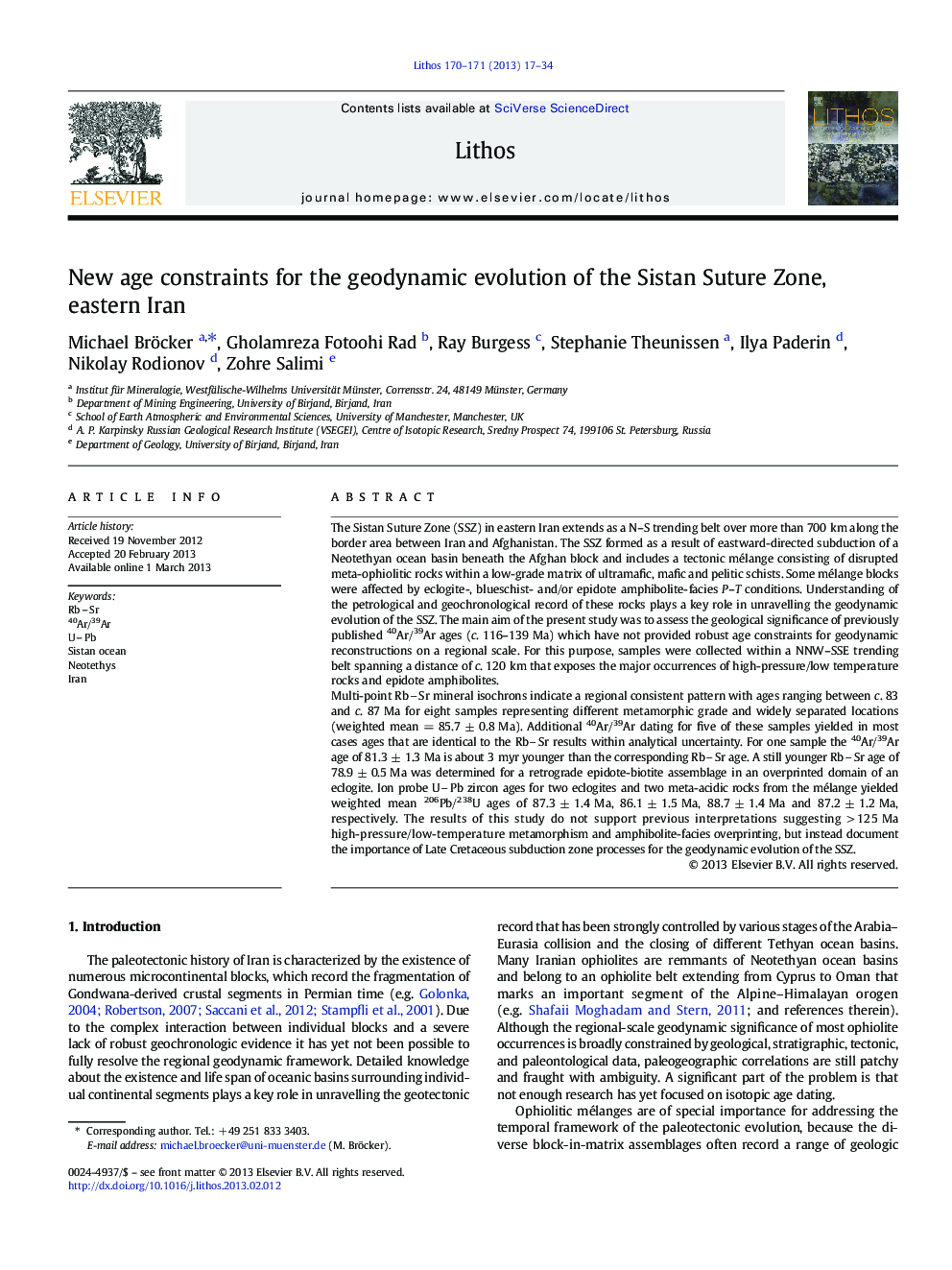| کد مقاله | کد نشریه | سال انتشار | مقاله انگلیسی | نسخه تمام متن |
|---|---|---|---|---|
| 4716229 | 1638692 | 2013 | 18 صفحه PDF | دانلود رایگان |
• We report new RbSr, ArAr and UPb ages for HP rocks from the Sistan Suture Zone.
• The geological significance of previously published 40Ar/39Ar ages is questioned.
• Our results document the importance of Late Cretaceous subduction zone processes.
• The new data provides key information for an improved geodynamic interpretation.
The Sistan Suture Zone (SSZ) in eastern Iran extends as a N–S trending belt over more than 700 km along the border area between Iran and Afghanistan. The SSZ formed as a result of eastward-directed subduction of a Neotethyan ocean basin beneath the Afghan block and includes a tectonic mélange consisting of disrupted meta-ophiolitic rocks within a low-grade matrix of ultramafic, mafic and pelitic schists. Some mélange blocks were affected by eclogite-, blueschist- and/or epidote amphibolite-facies P–T conditions. Understanding of the petrological and geochronological record of these rocks plays a key role in unravelling the geodynamic evolution of the SSZ. The main aim of the present study was to assess the geological significance of previously published 40Ar/39Ar ages (c. 116–139 Ma) which have not provided robust age constraints for geodynamic reconstructions on a regional scale. For this purpose, samples were collected within a NNW–SSE trending belt spanning a distance of c. 120 km that exposes the major occurrences of high-pressure/low temperature rocks and epidote amphibolites.Multi-point RbSr mineral isochrons indicate a regional consistent pattern with ages ranging between c. 83 and c. 87 Ma for eight samples representing different metamorphic grade and widely separated locations (weighted mean = 85.7 ± 0.8 Ma). Additional 40Ar/39Ar dating for five of these samples yielded in most cases ages that are identical to the RbSr results within analytical uncertainty. For one sample the 40Ar/39Ar age of 81.3 ± 1.3 Ma is about 3 myr younger than the corresponding RbSr age. A still younger RbSr age of 78.9 ± 0.5 Ma was determined for a retrograde epidote-biotite assemblage in an overprinted domain of an eclogite. Ion probe UPb zircon ages for two eclogites and two meta-acidic rocks from the mélange yielded weighted mean 206Pb/238U ages of 87.3 ± 1.4 Ma, 86.1 ± 1.5 Ma, 88.7 ± 1.4 Ma and 87.2 ± 1.2 Ma, respectively. The results of this study do not support previous interpretations suggesting > 125 Ma high-pressure/low-temperature metamorphism and amphibolite-facies overprinting, but instead document the importance of Late Cretaceous subduction zone processes for the geodynamic evolution of the SSZ.
Journal: Lithos - Volumes 170–171, June 2013, Pages 17–34
